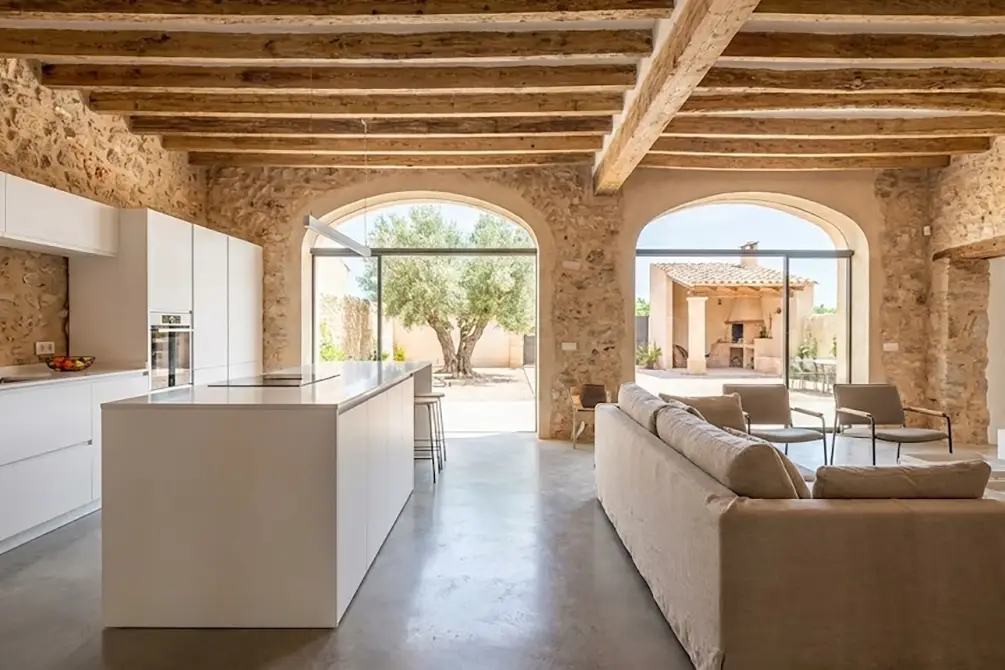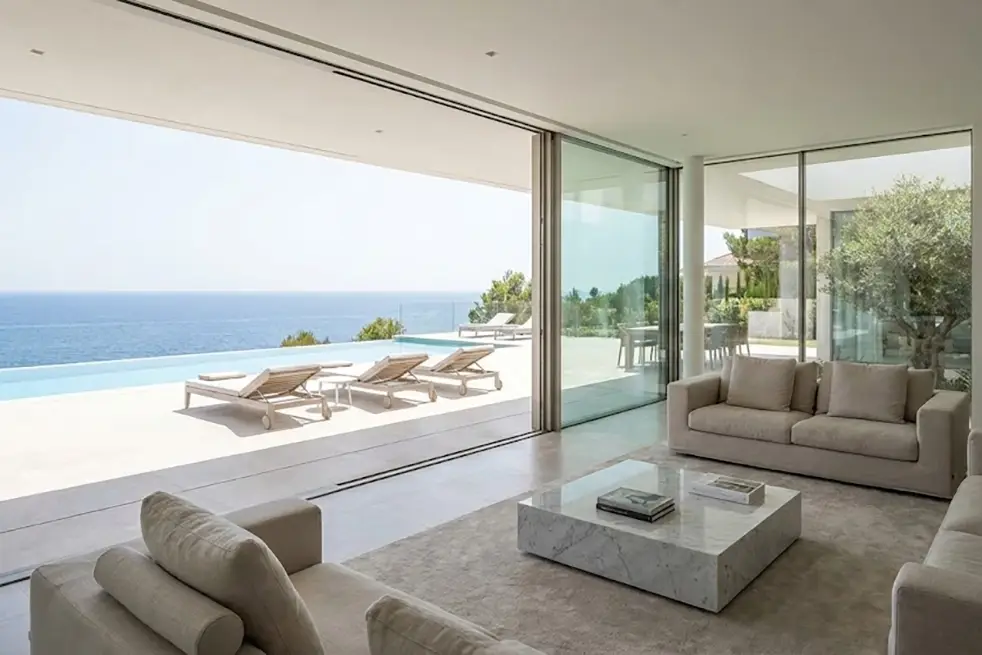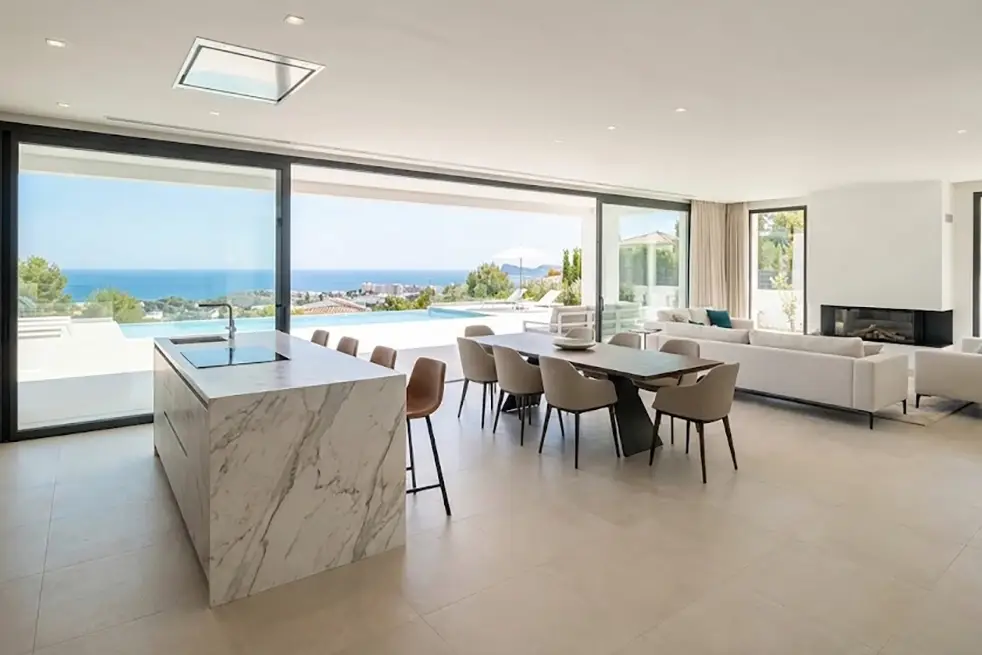In architecture, size isn’t everything. In fact, some of the most interesting projects arise in limited spaces. Smart layouts for small homes combine functional design, creativity, and a deep understanding of the lifestyle of those who live in them.
Today, with rising demand for compact homes in areas like the Costa Blanca, space optimisation has gone from a challenge to an opportunity to design better.
What is a smart layout?
A smart layout isn’t just about “fitting everything in”. It ensures every square metre serves a purpose and that the home feels comfortable and flexible. It means viewing the house as a connected whole, where spaces flow and adapt to different uses throughout the day.
In other words: it’s about living more with less—without sacrificing comfort, aesthetics or a complete domestic experience.
Key principles of a smart small-space layout
1. Open, connected spaces
In smaller homes, internal walls often disappear. We unify the kitchen, dining and living areas to create a sense of spaciousness and bring in more natural light. Visual continuity expands the perception of space, even when the actual surface area is limited.
2. Zoning without walls
We use furniture, level changes, rugs or lighting to define areas without creating physical partitions. A kitchen island can divide spaces while keeping flow. A sliding panel or open shelving can provide privacy without enclosing the room.
3. Multifunctional, custom-built furniture
Furniture must be carefully considered in small homes. We design pieces with multiple uses: sofa beds, extendable tables, storage benches or fold-down beds.
Custom-built furniture maximises every inch, fits awkward corners, and integrates storage without overcrowding the space.
4. Natural light and cross ventilation
A smart layout doesn’t just organise space—it enhances wellbeing. Prioritising natural light and cross ventilation improves air quality and comfort. Wherever possible, we orient main rooms to the south and place openings on opposite walls to move air naturally, reducing the need for mechanical systems.
Real-life cases and applied solutions
At La Quinta Fachada, we’ve developed numerous small home projects in the Comunidad Valenciana, particularly in areas like Dénia, Jávea or Altea, where land prices and building regulations limit the available floor area. Here are a few real solutions we’ve implemented:
– 40 m² home in Jávea
- Single open space with linear kitchen, bar-style dining and sofa bed.
- Compact bathroom with shower and vertical storage.
- Fold-down bed integrated into a unit with a foldable desk.
– Apartment renovation in Dénia
- Total redistribution to eliminate corridors.
- Perimetral wardrobe acting as a wall between bedroom and lounge.
- Continuous microcement flooring to create visual unity.
– Guest house in Moraira (30 m² usable space)
- Compact volume with generous ceiling height.
- Loft space used as a bedroom.
- Built-in furniture: sofa, wardrobes and kitchen aligned within the structure.
Technology and design: space-saving allies
Today’s digital tools allow us to simulate, test and refine layouts before building. From BIM software to photorealistic renders, clients can see their future home and make informed decisions.
Smart tech in small homes also allows for foldaway features, lighting that responds to use, and systems that activate only when needed—further enhancing functionality.
What about aesthetics?
Small doesn’t mean compromising on design. In fact, minimalist interiors, natural materials and soft, neutral tones enhance the feeling of space and create a serene environment.
The key is to eliminate the unnecessary, use continuous surfaces, select durable materials and keep visual clutter to a minimum.
Frequently asked questions about small-space design
Can I fit three bedrooms into less than 70 m²?
Yes—with the right layout. By using multifunctional furniture, compact circulation areas and open-plan spaces, three bedrooms can be achieved in less surface than expected.
Is it possible to add storage without making the home feel cramped?
Absolutely. We design vertical storage, drawers beneath benches, wall-integrated wardrobes and beds with built-in compartments. The goal is always functional clarity and visual flow.
Should I open the kitchen to the living room?
In most cases, yes. An open kitchen brings in more light, enhances spaciousness and encourages social interaction. If separation is needed, sliding panels or light dividers work well without fully closing the space.
Do you have a small home and want to make the most of it?
At La Quinta Fachada Architecture, we specialise in functional design, space optimisation and architecture tailored to Mediterranean living.
Whether it’s a holiday flat, urban studio or small new-build home, we can help you:
- Redefine the layout.
- Design custom furniture.
- Improve comfort and efficiency.
- Make every centimetre count—without losing style.




